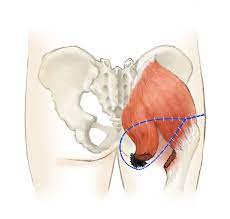
What is Pressure Sore Reconstruction?
Pressure sore reconstruction is a surgical procedure aimed at repairing and reconstructing areas of damaged skin and tissue caused by prolonged pressure or friction, commonly known as pressure ulcers or bedsores. These wounds typically develop over bony prominences such as the hips, tailbone, heels, and elbows and can lead to serious complications if left untreated. Pressure sore reconstruction involves techniques to remove damaged tissue, promote wound healing, and restore skin integrity to prevent recurrence and improve quality of life.
How is Pressure Sore Reconstruction performed?
Pressure sore reconstruction procedures may involve various surgical techniques depending on the size, depth, and location of the pressure sore, as well as the individual's overall health and functional goals. Common approaches include surgical debridement to remove dead or infected tissue, tissue flap or graft procedures to cover the wound and promote healing, and wound care techniques such as negative pressure therapy or specialized dressings to facilitate healing and prevent infection.
Who is a candidate for Pressure Sore Reconstruction?
Individuals who have pressure sores (also known as pressure ulcers or bedsores) that are not healing with conservative measures may be candidates for pressure sore reconstruction. Common indications for reconstruction include pressure sores that are deep, extensive, or recurrent, or those that are associated with complications such as infection, tissue necrosis, or impaired mobility. A consultation with a plastic surgeon or wound care specialist is essential to determine the most appropriate treatment approach based on individual circumstances.
What are the benefits of Pressure Sore Reconstruction?
Pressure sore reconstruction offers numerous benefits for individuals seeking to heal chronic wounds, prevent complications, and improve overall quality of life. Proper reconstruction can help promote wound healing, reduce the risk of infection and tissue necrosis, restore skin integrity and function, and alleviate pain or discomfort associated with pressure sores. By addressing pressure sores effectively, individuals can achieve improved skin health and mobility, as well as prevent recurrence of wounds.
What is the recovery process like after Pressure Sore Reconstruction?
Recovery from pressure sore reconstruction varies depending on factors such as the size and depth of the wound, the success of the reconstruction procedure, and individual healing factors. Following surgery, patients may undergo a period of wound healing, immobilization, and rehabilitation to promote tissue healing and prevent complications. It's essential to follow post-operative instructions provided by the surgeon, including wound care, activity restrictions, and medication management. Patients typically experience gradual improvement in wound healing and mobility over time.
What are the risks and complications associated with Pressure Sore Reconstruction?
Like any surgical procedure, pressure sore reconstruction carries certain risks and potential complications. These may include infection, bleeding, wound dehiscence (opening), delayed wound healing, tissue necrosis, or unsatisfactory aesthetic or functional outcomes. Additionally, individuals with complex pressure sores or associated medical conditions may be at increased risk for complications. However, the benefits of reconstruction often outweigh the risks, especially when pressure sores significantly impact skin health and quality of life.
Why choose VMG Hospital for Pressure Sore Reconstruction?
VMG Hospital in Hisar, Haryana, is a trusted provider of comprehensive plastic and reconstructive surgery care and treatment for individuals with pressure sores. Our team of skilled plastic surgeons, wound care specialists, and nurses has extensive experience in diagnosing and treating chronic wounds, ensuring timely and effective reconstruction to optimize outcomes. With state-of-the-art facilities and a patient-centered approach, VMG Hospital is committed to delivering compassionate care and helping patients achieve improved skin health and overall well-being.